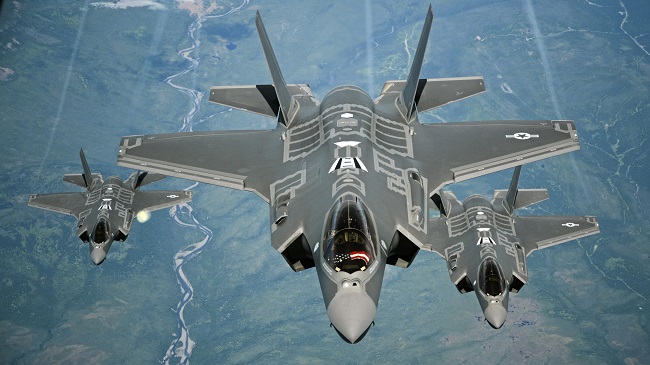Some fifteen years after Lockheed Martin won the Joint Strike Fighter (JSF) program contract, the company’s F-35A Lighting II jet fighter was finally declared “combat ready” by the United States Air Force.
The declaration of initial operational capability (IOC) for the F-35A means the USAF can now send its first operational formation of the fifth-generation aircraft with steal capability into combat missions anywhere in the world. The 34th Fighter Squadron based at Hill Air Force Base in Utah is home to the USAF’s first F-35A operational formation.
“I am proud to announce this powerful new weapons system has achieved initial combat capability,” Gen. Hawk Carlisle, the commander of Air Combat Command, said on August 2. “The F-35A will be the most dominant aircraft in our inventory because it can go where our legacy aircraft cannot and provide the capabilities our commanders need on the modern battlefield.”
The Air Force intends to buy 1,763 F-35As. The service is the single, largest customer of the JSF program, which also includes the U.S. Marine Corps, The U.S. Navy and several other governments around the world.
RELATED CONTENT
Canada pays $35-M to stay in F-35 program
Liberals consult companies anew on CF-18 replacement
The F-35 is descended from the X-35, which was the winning design of the JSF program.The JSF development contract was signed in November 1996, and the contract for System Development and Demonstration (SDD) was awarded in October 2001 to Lockheed Martin, whose X-35 beat the Boeing X-32.
“The combat ready F-35A is the latest fifth generation fighter aircraft in the Air Force’s inventory and provides our nation air dominance in any environment. The F-35A brings an unprecedented combination of lethality, survivability, and adaptability to joint and combined operations, and is ready to deploy and strike well-defended targets anywhere on Earth,” Gen. David Goldfein, Chief of Staff of the Air Force, said. “Today’s declaration of IOC is an important milestone on the road to achieving the full war-fighting capability for the F-35A.”
In order to obtain IOC status, the Hill Air Force Base needed at least 12 combat-ready F-35As capable of deployment anywhere in the globe to provide basic close-air support, interdiction and limited suppression and destruction of enemy air defense missions. A compliment of pilots, maintenance crews and support equipment for the squadron were also required.
The F-35A initially hit some snags. For example, some form of software instability was discovered earlier this year. The issue caused some booting up problems and random sensor shutdowns.
During interim readiness assessment, testers found the F-35A’s scope did not always display data intuitively. This required the pilot to zero in on a data point to get more information, according to DefenceNews. The Joint program office hopes to fix this problem in 2017 with new software, the publication reported.


Comments are closed.